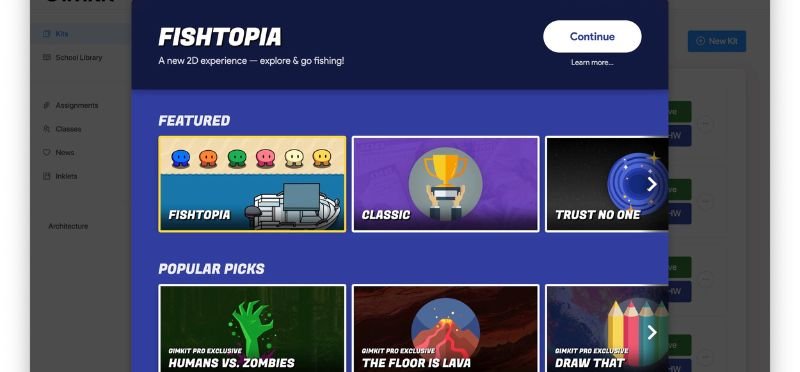
Mastering the Gimkit Dashboard: A Step-by-Step Guide
Are you ready to take your Gimkit game to the next level? Look no further! In this step-by-step guide, we will walk you through mastering the Gimkit dashboard like a pro. Get ready to unlock all the secrets and maximize your learning potential with this ultimate tool. Let’s dive in and become a Gimkit master together!
Introduction to Gimkit Dashboard
Welcome to the ultimate guide on mastering the Gimkit Dashboard! Whether you’re a teacher looking to create interactive and engaging lessons or a student eager to level up your learning experience, understanding how to navigate the Gimkit Dashboard is key. In this step-by-step guide, we’ll dive into all the features and functions that make this platform an educational game-changer. So buckle up and get ready to unlock the full potential of Gimkit with us!
Read More: Tropical Treasures: Handcrafted Gins with a Botanical Twist
Navigating the Gimkit Dashboard: A Detailed Overview
Once you log into Gimkit, the dashboard is your gateway to creating engaging and interactive learning games. The layout is user-friendly, with clear tabs for easy navigation.
The main sections include Game Settings, Classes, Reports, Store, and Analytics. Each tab offers specific functionalities that help you customize your gameplay experience and track student progress effectively.
In the Game Settings section, you can add questions and answers easily by inputting text or importing from other sources. Setting win conditions like earning a certain amount of money or reaching a specific goal adds excitement to the game.
Customizing themes and colors allows you to create a visually appealing game environment tailored to your lesson content. With just a few clicks, you can transform the look and feel of your game.
Overall, mastering the Gimkit dashboard gives educators powerful tools to make learning fun and impactful for students.
Read More: Bushfire Preparedness in Perth: A Guide to Understanding Your BAL Report
Customizing Your Game Settings on the Dashboard
Once you’ve mastered navigating the Gimkit Dashboard, it’s time to dive into customizing your game settings for a personalized and engaging experience. Start by adding questions and answers that align with your lesson objectives, making learning interactive and fun. Set win conditions and choose in-game features like power-ups to keep students motivated throughout the game.
Personalize your game themes and colors to create a visually appealing environment that captures students’ attention. Whether it’s choosing a theme related to the subject matter or selecting vibrant colors to enhance engagement, customization options are endless. Experiment with different combinations until you find what works best for your class dynamic.
By tailoring these settings on the dashboard, you can create an immersive learning experience that resonates with your students while achieving educational goals effectively.
Adding Questions and Answers
Adding questions and answers on the Gimkit dashboard is a breeze. Simply click on the “Add Questions” button to start creating your game content. You can type in the question and multiple-choice answers directly into the provided fields.
Don’t forget to assign point values to each answer option based on their correctness. This feature allows you to customize how points are awarded during gameplay, adding an element of strategy for students.
Moreover, you can include images or GIFs in your questions to make them more engaging and visually appealing for players. This interactive feature enhances student participation and keeps them motivated throughout the game.
By incorporating a variety of question formats like multiple choice, true/false, or fill-in-the-blank, you can cater to different learning styles and reinforce key concepts effectively within your classroom setting.
Setting win conditions and in-game features
When it comes to creating an engaging Gimkit game, setting win conditions and in-game features is key. By determining the criteria for players to reach victory, you can tailor the gameplay to suit your objectives.
In the Dashboard, you have the flexibility to choose how players can win – whether it’s by earning a certain amount of virtual currency or answering a set number of questions correctly. This customization adds depth and excitement to the learning experience.
Additionally, exploring different in-game features such as power-ups, bonuses, or penalties can elevate the competitiveness of your Gimkit game. These elements keep players on their toes and actively engaged throughout each round.
Experimenting with various win conditions and in-game features allows you to create a dynamic and interactive experience that resonates with your students’ learning goals.
Personalizing game themes and colors
When it comes to personalizing your Gimkit game, the dashboard offers a plethora of options for customizing themes and colors.
You can choose from a variety of vibrant themes that not only make your game visually appealing but also keep your students engaged. Whether you prefer a sleek modern look or something more playful and colorful, there’s a theme to suit every preference.
Additionally, selecting specific colors can enhance the overall gaming experience for your students. Bright and eye-catching colors can help draw attention to important elements within the game, making it easier for players to navigate through questions and answers.
Experiment with different combinations of themes and colors to create a unique atmosphere that reflects your teaching style and keeps students excited about learning through Gimkit!
Read More: How To Create LinkedIn Headshots Using AI
Managing Classes and Students on the Dashboard
When it comes to managing classes and students on the Gimkit dashboard, organization is key. You can easily create and customize classes to keep track of student progress efficiently. Setting up classes allows you to tailor game settings based on specific learning objectives or student needs.
Adding students to your classes is a breeze with the dashboard’s user-friendly interface. Once added, you can monitor individual student progress and performance in real-time. This feature enables personalized feedback and targeted interventions for each learner.
Utilizing student reports generated by the dashboard provides valuable insights into areas where students excel or may need extra support. These reports help educators make data-driven decisions to enhance teaching strategies and improve overall class performance.
Managing classes and students through the Gimkit dashboard streamlines administrative tasks, allowing teachers to focus more on engaging with their students and delivering impactful learning experiences.
Creating and organizing classes
When it comes to managing classes on the Gimkit Dashboard, organization is key. Creating classes allows you to group students efficiently for targeted learning experiences. Start by clicking on the “Classes” tab and selecting “Create Class.” Give your class a name and set up any additional details or settings as needed.
Once your class is created, you can easily organize it by adding students individually or through bulk upload options. This streamlined process saves time and ensures that each student is correctly assigned to the appropriate class for seamless tracking of progress.
By organizing classes effectively, you can tailor assignments, quizzes, and activities to specific groups of students based on their needs and abilities. This level of customization enhances engagement and promotes a more personalized learning experience for everyone involved.
Utilize the flexibility of the Gimkit Dashboard to create a structured environment where both educators and students can navigate with ease.
Adding students and managing their progress
Adding students and managing their progress on the Gimkit Dashboard is a breeze. Simply navigate to the “Classes” tab, select your desired class, and click on “Add Students.” You can input individual student names or import them in bulk using CSV files for efficiency.
Once students are added, track their progress by viewing reports that showcase their performance in various games. These reports help you identify areas where students excel and pinpoint topics that may require additional review.
You can also assign specific assignments or tasks to individual students based on their unique learning needs. This personalized approach allows you to cater to each student’s strengths and weaknesses effectively.
The ability to manage student progress seamlessly within the Gimkit Dashboard empowers educators to tailor their teaching methods for optimal engagement and knowledge retention.
Utilizing student reports for assessment
When it comes to assessing student progress in Gimkit, the dashboard offers a powerful tool through student reports. These reports provide valuable insights into individual performance, allowing you to track strengths and areas for improvement.
By analyzing the data provided in these reports, educators can tailor their teaching methods to better meet the needs of each student. Understanding how students are engaging with the material helps in adjusting lessons and activities accordingly.
Through the assessment feature on the dashboard, teachers can identify trends among students and make informed decisions about interventions or additional support. This personalized approach fosters a more effective learning environment where every student has the opportunity to succeed.
Utilizing student reports not only benefits individual learners but also contributes to overall class performance by enabling targeted instruction strategies based on real-time data analysis.
Read More: Exploring the World of Travel with hoptraveler.com: A Comprehensive Guide
Utilizing the Data Analytics Feature
Utilizing the Data Analytics Feature, you can gain valuable insights into your students’ performance and engagement levels. By tracking their progress and understanding their strengths and weaknesses, you can tailor future lessons to better meet their needs. The data analytics feature on the Gimkit Dashboard is a powerful tool that allows you to make informed decisions about your teaching strategies and student support.
Mastering the Gimkit Dashboard is not only about creating engaging games but also about leveraging its features to enhance learning outcomes. With a detailed overview of navigating the dashboard, customizing game settings, managing classes and students effectively, and utilizing data analytics, you are well-equipped to take your teaching experience to the next level with Gimkit. Start exploring all that the Gimkit Dashboard has to offer today!



